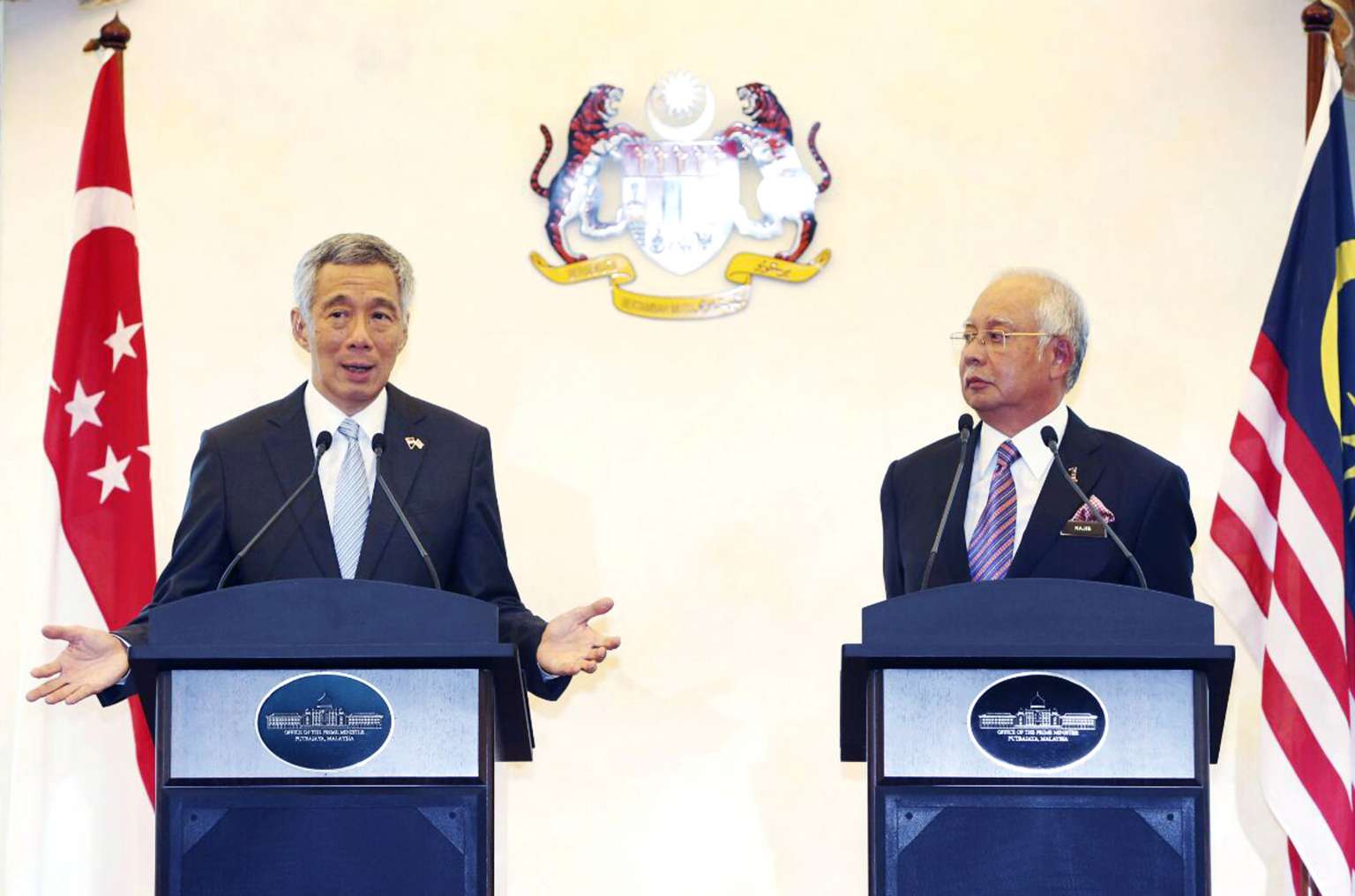Singapore-KL high-speed rail: Bridge over Johor Strait more cost-effective option, say experts
Sign up now: Get ST's newsletters delivered to your inbox

Singapore and Malaysia signed a legally binding bilateral agreement to build a high-speed rail line that is targeted to start operating by on Dec 31, 2026.
ST PHOTO: CHEW SENG KIM
Adrian Lim
Follow topic:
Building a bridge across the Strait of Johor to link the high-speed rail (HSR) between Singapore and Malaysia is cost effective compared with tunnelling undersea, said industry experts.
Tunnelling can cost 21/2 to 10 times more, they estimated, and would add to the engineering complexity of the joint project, slated to start operations in 10 years.
Yesterday, both countries signed a landmark deal on the 350km line, which will let commuters zip between Singapore and Kuala Lumpur in 90 minutes. Besides formally agreeing on the HSR's financial and operating model, both sides decided that it will run on a bridge over the Johor Strait, with a height clearance of 25m above the water level.
The bridge was hailed by observers, who noted that earlier Malaysian reports quoted the Johor state government as saying it hoped an undersea tunnel would be built.
An example of a HSR system that goes undersea is the Eurostar, which runs through a tunnel under the English Channel linking Britain and France.
Mr Rajan Krishnan, chief executive of the KTC construction group, said: "Tunnelling underground will be at least 21/2 times more expensive than building an above-ground structure. It makes more economic sense to build above ground."
Mr Philippe Lorand, project director for Asia at French rail group SNCF, estimated that the cost of an undersea rail tunnel could be up to 10 times that of a bridge.
SIM University senior lecturer Park Byung Joon noted that building bridges above water can place a restriction on vessel traffic.
"If the bridge is too low, larger ships cannot pass through," he said. But this should not be an issue, Dr Park added, as the bridge linking the HSR is about the same height as the Second Link.
The agreement signed yesterday also set out a target start date - for the express non-stop services between the Jurong terminus in Singapore and the Bandar Malaysia terminal in Kuala Lumpur. They are to start by Dec 31, 2026.
Dr Park said this was feasible, as HSR systems built more than a decade ago, like the Korea Train eXpress between Seoul and Busan, took about 10 years to finish.
But he noted that HSR systems require a straight alignment, which means many bridges and tunnels will have to be constructed. The bulk of the construction challenges will be in Malaysia, where 335km of the 350km line will be sited.
Singapore Business Federation chairman Teo Siong Seng foresees the HSR boosting business linkages and increasing competitiveness.
"Some firms may have their office in Singapore and, with the HSR, they can go to Kuala Lumpur for a lunch meeting and come back to Singapore within a day," he said.
Mr Teo suggested that the business communities from both sides "form a business council to discuss how we can reap the benefits from the HSR connection".
Political observer Mustafa Izzuddin of the ISEAS - Yusof Ishak Institute said the new bridge over the Johor Strait, in addition to the Causeway and Second Link, is symbolic of deepening bilateral ties.
With the HSR, more of the bilateral differences will become just water under the bridge, "with the emphasis now being towards perfecting a cooperative and responsible Malaysia-Singapore partnership, premised on mutual trust, political will and smart strategic thinking", he added.
•Additional reporting by Marissa Lee

